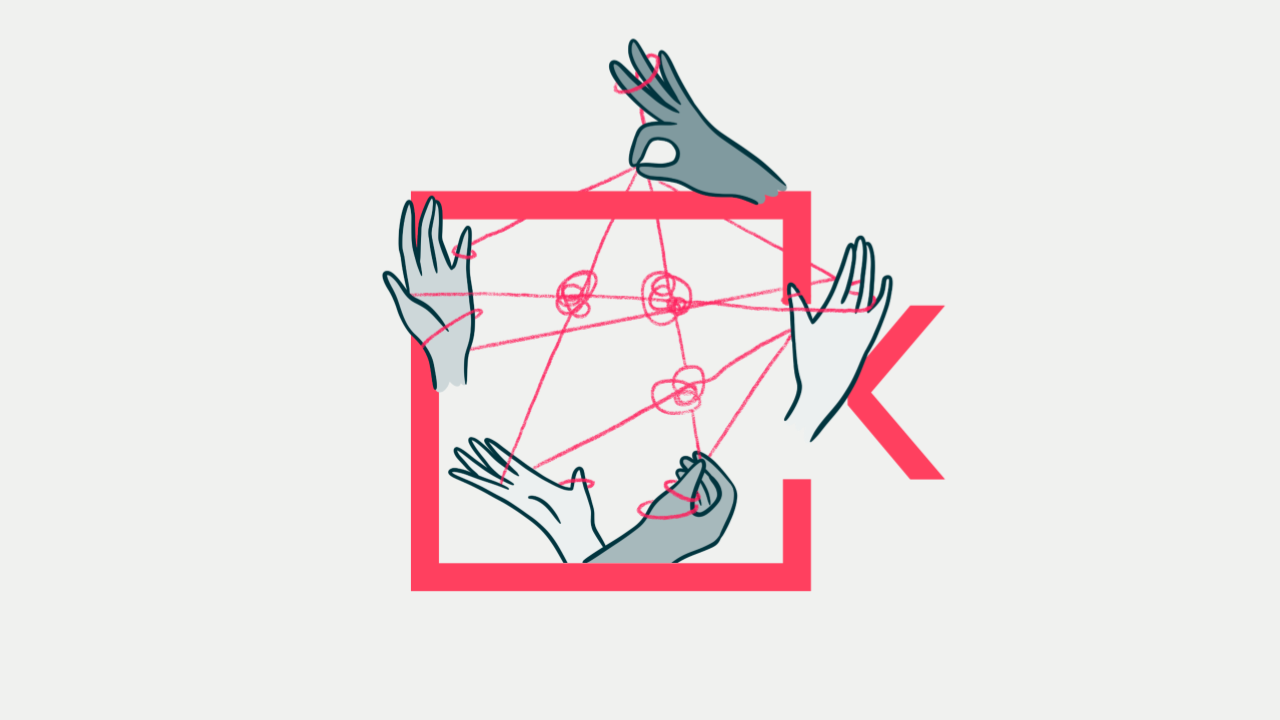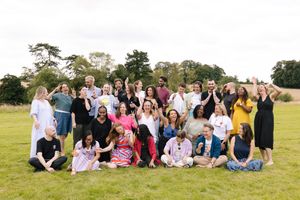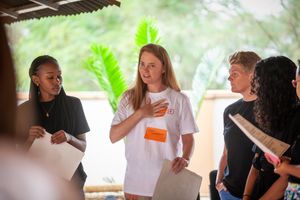
This week a large handful of wonderful people gathered to explore what transformative organisations do on the ground, to enable transformative change.
Together we listened to inspiring stories from Ida Uusikyla (UNDP Strategic Innovation Unit) and Preeti Thapa (The Asia Foundation), which rooted us in reality:
- UNDP Vietnam’s portfolio of work around circular economy, and how it fits in UNDPs new strategy
- The Asia Foundation’s experience facilitating change in Nepal’s justice system
These examples, and descriptions of the organisational factors that enabled (or hindered) this work catalysed deep discussions.
Together, we explored principles that underpin our experiences. I’ve shepherded the ideas into a neat five.

I hope these do justice to the conversation, but know that they are, of course, not exhaustive!
1. Co-inquire and co-create across levels
Explore and design WITH the stakeholders in the system
- Set the expectation that there’s no ‘answer’ yet, that all perspectives are valuable to understand and shape the system
- Keep exploring what’s happening in the system as you go
Expect to work at multiple levels in the system (individual, community, local authority, national)
- Bring together the formal and the unplanned/informal
Reframe your role with your partners, giving yourself space to be transformative:
- ‘For UNDP, governments tend to look to us in a particular way: we have an issue, please help us to come up with a solution. And we’ve been having to reframe that conversation.’
2. Centre lived experience
Get out of the office and listen deeply
- Be ready to hear things that challenge your expectations
- For example, the UNDP in Vietnam had expected a stream of their work to be about formalising the waste sector…. Until they spoke to people working in waste who were clear this wasn’t what they wanted
Engage meaningfully with people and communities
- Move away from ‘convening everyone’
- Your first attempts might not result in the connection you need
Get comfortable with an entirely new way of seeing and thinking
- For example, some communities see mutual indebtedness as a form of ‘social glue’ which creates connections and enables relationship management especially in times of tension or conflict- something which international development programme designers fail to take into account
Create feedback loops between what’s happening on the ground and decisions
- Or better yet, move decision making nearer the lived experience
3. Tell the story
Name the current paradigm and intent
- What does the existing system look like?
- What is the change we hope to create? Use this as a north star
- “If we don’t talk systems change, systems won’t change” Preeti
Describe the narrative of change
- What are the assumptions about how change will happen?
- This can look a bit like a theory of change, but be aware that TOCs are often viewed as logic (when we do this, that will happen). Make it clear that the narrative is based on assumptions to be tested
- Tell stories about progress, to motivate and build momentum
4. Learn by doing
Set out to experiment
- Be intentional in testing assumptions
- Expect some things to fail and some things to make a greater difference
- Test ideas concurrently (at the same time)
Build a reflective practice
- Add reflect and learn moments into methods
Learn with and alongside your collaborators in systems change
- In The Asia Foundation’s mediation programme in Nepal, conversations with communities and mediators shaped the programme’s adaptations
5. Shift mindsets
Build mindsets and practices of humility, learning and curiosity
- These may not come naturally (or may not have been incentivised, historically)
- Model these, in leadership
- Reward these, with recognition
- Encourage these, by practicing together through ways of working
Build relationships and relational awareness
- Invest in connections and relationships to understand more deeply, and to spark change
- Contemplate the relationship between things, look for interconnected patterns and opportunities
- Practice deep listening in your own organisation
Shift from idea of ‘delivery and implementation’ (which suggests shipping a pre-determined plan) to ‘transformation’
These principles are easy to write, and hard to implement because they are often at odds with what’s funded.
We still live in a world where linear thinking is incentivised (through logframes, compliance, results based management etc). In order to model the points above, we need to work simultaneously at multiple levels:
- With organisations on the ground, to transform towards these starting points.
- And with the funders and local governments that create the incentives and set the tone for ways of working.
These principles are of course, not, of course, definitive (or anywhere complete). But they’re an inspiring start.
We’re going to come back together again in January to keep this conversation going. Would you like to join us?




